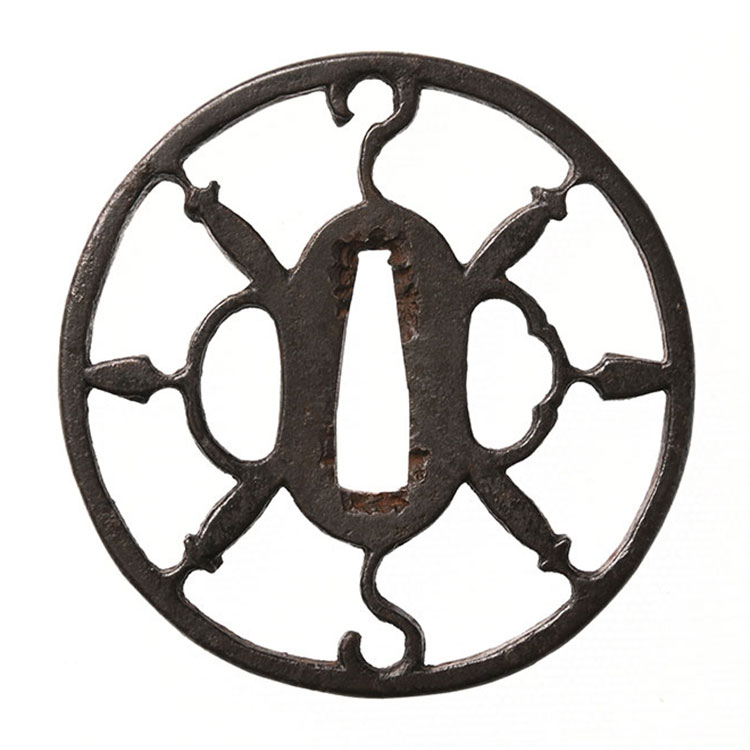
保存刀装具 Hozon Tousougu
尾張鍔Owari Tsuba
No.921624尾張 紋様車透鍔Owari Monyou Kusuma Sukashi(pattern wheel watermark Sukashi) Tsuba
- 極めKiwame
- 尾張Owari
- 法量Size
-
縦 79.5cm 横 78.4cm 切羽台 0.4cm 重量 73.0g
Length 79.5cm Width 78.4cm Seppadai 0.4cm Weight 73.0g
- 国Country
- 尾張Owari
- 説明Drscription
- 丸形・鉄槌目地・地透・角耳小肉
尾張鐔(尾張透鐔)は、現在の名古屋で製作され室町後期に始まり江戸初期に及んでいると推量される。同時代の透鐔の双璧である京透に比べ、力強く線の太い感じがある。図柄やつなぎの力強さ、肉置きの良さ、鉄色のさえなどが特色である。
丸形、竪丸形、次いで木瓜形あまり異形なものがない。切羽台は耳際の厚さに比べると少し低い。構図は上下左右釣り合いが対照的にまとまっていて、家紋図、糸巻図、琴柱図、茗荷図、花桐図などがあり人物図はない。Marugata Tetsutsuchimeji Jisukashi Kakumimikoniku
Owari tsuba (Owari Sukashi Tsuba) is presumed to have been produced in present-day Nagoya, beginning in the late Muromachi period and extending to the early Edo period. Compared to the Kyototsuba, which is the two best openwork tsuba of the same period, it has a stronger and thicker feel to the lines. The design and strength of the connection, good meat placement, iron-colored evenness, etc.
Round shape, vertical round shape, followed by Mokko shape. The face base is slightly lower than the thickness of the ear. The composition has a contrasting balance between top and bottom, left and right, and includes Kamon(family crests), thread windings, koto pillars, myoga, and hanakiri, but no figures.


